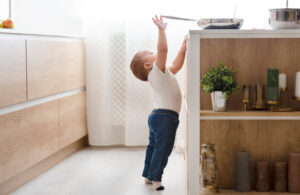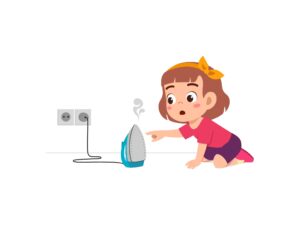Child Abuse or Accident – Burns in Children
Child abuse is a serious offense for everyone involved. A child is at risk of losing his parents and the parents are at risk of losing their child. A child trusts their parents even when the parents abuse them because the parents are the only caregivers they know. It is critical to keep a family together if at all possible. Therefore, distinguishing the difference between intentional and accidental burn marks is crucial. It is very difficult to distinguish whether a burn by hot liquid was intentional or accidental, and having an expert review your case is essential to evaluating the likelihood of an intentional or accidental injury occurring.
Abusive burn injuries to children make up approximately 10% of hospital admissions to burn units. These children are usually under the age of ten with the majority under the age of two. And oddly enough, children who are intentionally burned are significantly younger and stay in the hospital longer than children with accidental burns.

Usually, an inflicted burn has characteristic patterns that cannot be concealed and therefore, this characteristic is what usually distinguishes an intentional burn from an accidental one. It is essential for healthcare professionals to take an extensive and detailed history of the accident, asking carefully worded questions in order to solicit answers that can either raise or lower the suspicion of child abuse and a detailed medical history.
- Consistency – Does the explanation fit the injury? Contradictory stories with different witnesses?
- Characteristics – Again, is the burn mark consistent with the account of the injury? Does it have a clean line of demarcation? Location of burns?
- Comorbidity – Other injuries present? Types? Ages?
- Child – Age of development appropriate and compatible with accounts of the injury?
- Caretaker – Insisting there are no witnesses? Delay in treatment? Angry or resentful to the child or others involved?
Children have much thinner and fragile skin than adults, so their skin can be injured quickly and with less heat. Here are some common types of inflicted burns:
- Spill/Splash – The most common type of burn in a child is a scald burn caused by any hot liquid. These burns can be caused by either spilling,splashing, or immersing. Most deliberate burns are caused by tap water. If water falls onto a child, the burn pattern is irregular margins and irregular depth with an obvious initial contact point. Clothing can alter the burn pattern, so retaining the clothing that the child was in at the time of the burn can be a crucial piece of the puzzle. It is imperative to ask specific details about how the child accessed the water, where the water was located, and issues surrounding kitchen safety. The location of the burn on the child’s body can also help determine whether or not the burn was intentional.
- Immersion – The child may either fall into water or be placed into the water for this type of burn to occur. There are distinct water lines visible with this type of burn, indicating the depth. The depth of the burn is also uniform. If there are no splash areas then the child most likely didn’t thrash around. Deliberate immersion burns are often located on the buttocks, anus, or genitals. Evaluation on scene of the depth of the water, the clothing or dirty diapers in the room, and the temperature of the water. Children burn more quickly than an adult will.
- Temperature of water – check thermostat of water heater
- Time of exposure – unknown that may be estimated from the patterns and depth of the burns
- Depth of the burn
- Occurrence of sparing – areas around or within the burn that were spared from the burn injury. A child subconsciously may protect areas of the body by curling up body parts, thrashing, or being held by an adult.
Deliberate immersion burns may present with different patterns such as a donut pattern on the buttocks due to sitting in the tub, sparing of the soles of the feet, socking or glove patterns seen when hands and feet are held in water, and/or a waterline which is a sharp line on the body where the water stopped.

- The other common type of burn is a contact burn sort of like branding and will look like the object that caused the burn. Instruments that cause branding burns are things like a curling iron, a steam iron, a cigarette, a cigarette lighter, a fireplace, a grill, a heated kitchen tool or other implements. Flame burns are less likely to be deliberate, but if they are, then they will be more severe than an accidental burn of thesame type. If a child contacts a hot surface they will pull back immediately so there would usually be a lack of pattern.
- The most common intentional burn to a child is a cigarette or an iron burn. Purposefully inflicted branding injuries usually look like the object used to burn the child. Again, pointed questions are required to determine this etiology.
Burns are classified as partial or full thickness and only a medical professional can determine the difference. They can either be 1st, 2nd, 3rd, or 4th degree burns, with the 4th being the most serious.
There are various skin conditions that may simulate burn abuse such as infections, hypersensitivity reactions, and/or marks left by folk remedies.
In summary, since child abuse is such a serious accusation for all involved, a very careful medical/physical assessment, careful and thoughtful questioning of witnesses and the child if possible, photographs, a detailed assessment of the scene of the incident, possible reenactment of the incident, and a very thorough medical history must be taken to assure all facts are correct.
Don’t miss our newsletter! Topics covered are:
Assault / Trauma
DUI / General Medical
Child & Elder Abuse / Neglect
Mental Health / Toxicology
Sign up here.












